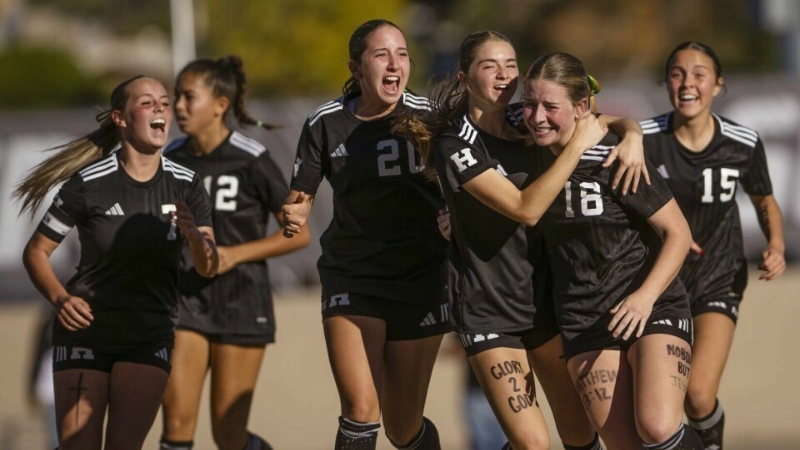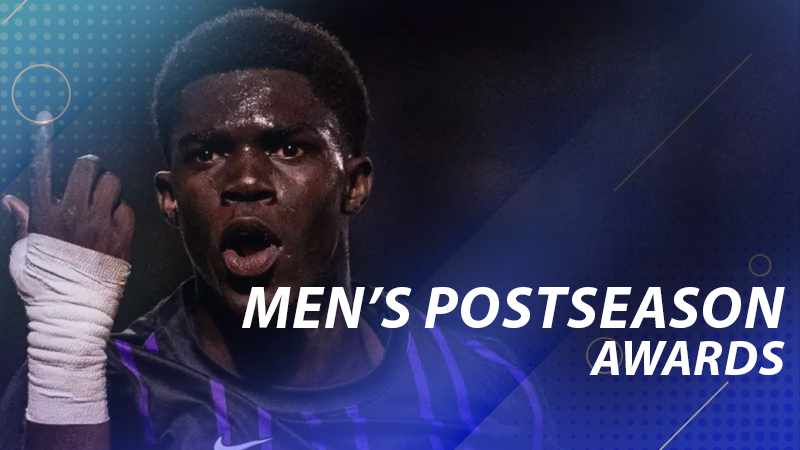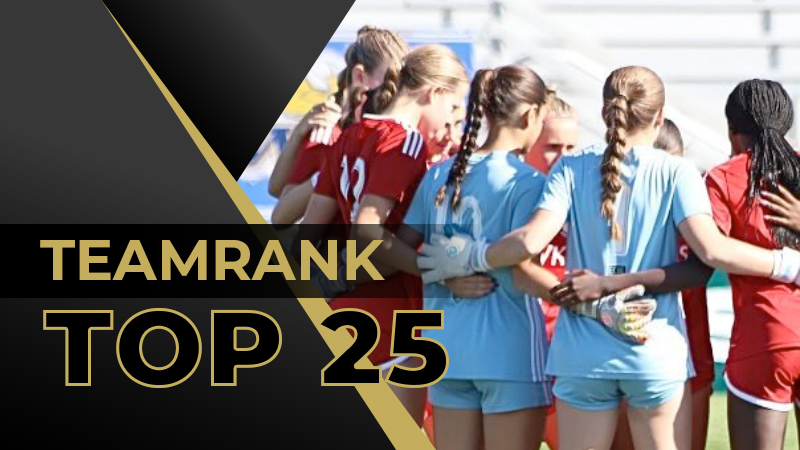 So Cal Blues 2015 College Commits
So Cal Blues 2015 College CommitsTDS Q&A: So Cal Blues coach Randy Dodge
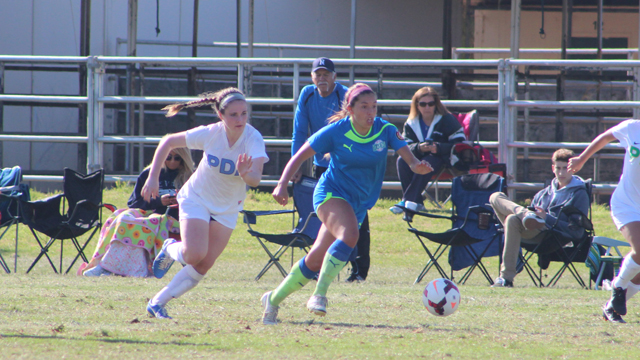
There were many contributing factors to the recent success of the U.S. U17 Women’s National Team, but one club definitely had a lot of influence. So Cal Blues contributed three players to the roster for the recent NTC Invitational in Carson, California. Two of the Blues standouts started the deciding game against Japan, and had a pretty big influence on the overall outcome of the tournament for the youth national team.
This isn’t new territory for the Blues, as the California club has been producing talented players for the youth national team and collegiate level for many years now.
TopDrawerSoccer chatted with So Cal Blues ECNL Technical Director Randy Dodge about his current crop, recruiting vs. development, and the growth of the national team.
Read More Q&As: Chivas USA Academy Coaches | U17 head coach B.J. Snow
TopDrawerSoccer (TDS): So Cal Blues has been one of the most consistent clubs at producing players for the youth national teams with starters on the last two U17 qualifying teams and now three players on this current team. What has been the key for the club’s ongoing success in producing players to play at the international level?
Randy Dodge (RD): Here at So Cal Blues, we look at the overall student athlete. We start our identification process at an early age- the U8s, 9s and 10s, to evaluate a player’s mental and physical capabilities in addition to her technical and tactical abilities. We are interested in the complete development of players: inside and out, which has enabled us to work with elite athletes, including so many national team level players. Because of the time invested in the development of the younger ages, we have youth national team players starting at U14 and all the way up through the U23s.
TDS: With three U17 WNT players on your current So Cal Blues U16 team, how do you keep them motivated after they’ve enjoyed so much success at the youth international level?
RD: I have been blessed to coach the last two cycles of players going through the U17 national team programs. These current players have been able to see how the previous players; Katie Pingel, Annika Rodriguez, and Katherine Hess, reacted when they came back to training. They got firsthand knowledge about how to compete at the international level and then come back and compete at the ECNL level.
We focus on the four components of soccer: mental, physical, technical, and tactical, and play tons of small sided games. Within that, everything we do in every training session is always built around competition. So if these girls come back from national team camp and want to cruise, they are going to get beat. They are on the national team for a reason—they are competitive and want to win, whether they are U8 or U18.
 So Cal Blues 2015 College Commits
So Cal Blues 2015 College CommitsTDS: You’ve been coaching at a very high level for a long time. Do you think what U.S. Soccer is looking for in youth national team players is changing?
RD: Overall, the game of soccer itself has changed so much. So naturally, U.S. Soccer has had to adapt at what they look for in their youth national team players. It has changed how all of us coaches look at players.
At the So Cal Blues, we have always looked for possession oriented players and that is what has separated the Blues from other clubs since 1990. Over the last few years we have started to see more players like that have a more prominent role in our national team level because of the evolution of the international game.
TDS: Five seasons of the ECNL now – do you believe the league has helped So Cal Blues improve?
RD: The ECNL has greatly helped the So Cal Blues, but it has also had an immense impact on women’s soccer across the country. One key aspect that the ECNL brings is that every game counts. Just like in college and at the international level. It really makes coaches prepare week to week for the opponent. Additionally, being able to know the schedule for the whole year in advance helps with the costs to the families and helps coaches plan out the year, technically, tactically, and what they want to accomplish.
TDS: If you could change one thing about the ECNL, what would it be?
RD: One thing I would change about the ECNL is less travel for the U17 age group. Because of the ECNL, the majority of players (especially on the west coast) have already committed to colleges, so eliminating one of the traveling events would be ideal. And building off of that, I believe that a shift to an academy-like schedule would improve the ECNL even more.
TDS: When you first get these players trying out for the club, what are the main attributes that you are looking for?
RD: We look for players that are absolute hard-workers, are always active-both on and off the ball, and how they respond in various situations. We watch what players do after they lose the ball just as much as what they do with the ball. We want players that are going to battle back after a mistake, because you want that attribute at every position on the field. Because we play a very rhythmical style of play, we seek players who are technically gifted and can be creative in tight spaces.
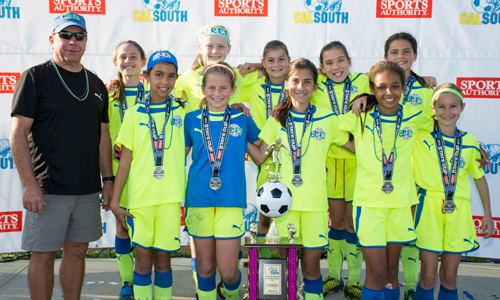 So Cal Blues U10 State Champions
So Cal Blues U10 State ChampionsTDS: So Cal Blues is one of the most prominent clubs in the hotbed of girl’s soccer. I imagine there’s a long list of players who want to play for your teams. How do you handle player development vs. recruiting?
RD: Player development and recruiting go hand in hand. The players who have played for us always have the first crack at being part of the team; loyalty is a big thing for us. But at the end of the day, you always have to be looking at making your team better if you are going to stay competitive with the top ten teams in the country. We are very picky about adding players to existing teams, because they have to be a good fit and not disrupt team chemistry.
TDS: One the attributes about So Cal Blues players seems to be quick feet and ability to play at a quick speed – especially with Ashley Sanchez. Are these qualities that the club focuses on through the development process?
RD: Ashley Sanchez is not the norm; she is an incredible player with God-given talent. All I try to do is give her ideas and motivation and she is the one that is motivated to compete with the best in the country. What we try to do in the development process with all of our players at the So Cal Blues is teach and enable players to make quick decisions with the ball in tight spaces. We do a ton of technical work in and around goal to reinforce and be comfortable in those situations.
photos via scblues.com
Headlines
- Recruiting Roundup: December 15-21
- How Do I Get Scouted by TopDrawerSoccer?
- 2026 Women's Division I Transfer Tracker
-
Rocky Mountain High School Roundup

- 2025 Men's DI Postseason Awards
- Niko Markovic Selected First in MLS Draft
-
Commitments: Defender Swaps Coasts

- TopDrawerSoccer TeamRank Update - Girls
- 2026 Major League Soccer Draft Results
- Women's College Postseason Freshmen Top 100

